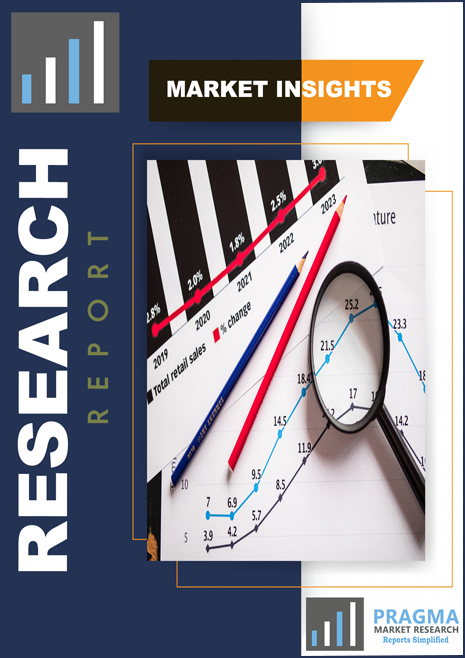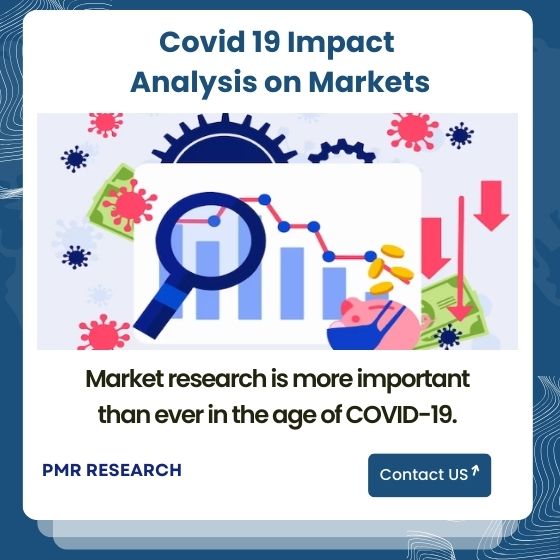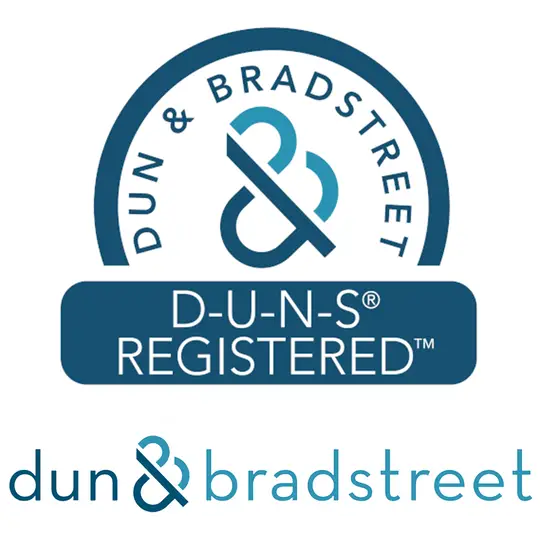
Gastrointestinal Disease Treatment Market, By Types (Branded, Proton Pump Inhibitors, Enzyme Replacement Therapies, Amino-salicylates, Antacids, Anti-emetics, Anti-diarrheal, Biologics, and Others and Generics), By Route (Oral, IV, Others) And Geography (North America, Europe, Asia Pacific, And Rest Of The World) ? Analysis, Share, Trends, Size, & Forecast From 2017 ? 2028


Market Executive Summary
REPORT HIGHLIGHT
The gastrointestinal disease treatment market is estimated to represent a global market of USD 34.8 billion by 2017 with growth rate of 5.8%.
Market Dynamics
Gastrointestinal disorders are functional disorders that affect the sections of GIT track and its accessory organs such as the pancreas, salivary glands, and liver. This disorder includes chronic, acute, recurrent as well as functional disorders which cover wide range of GIT track diseases. Some of the most common GIT disorders include Crohn?s disease, GIT cancers, inflammatory bowel disease, irritable bowel syndrome, diarrhea, dyspepsia, and others. The continuous increase in the prevalence of these diseases is expected to support the market growth to great extent.
As per the World Health Organizations, colon cancer caused more than 694 000 deaths in 2014. A report published by the American Cancer Society also stated that around 100,000 colon cancer cases were diagnosed in the U.S. alone, which is expected to increase by 62% till 2030. Such high prevalence rate will upsurge the demand for GIT therapeutics, leading to driving the market growth. Additionally, the emergence of novel therapeutics such as biosimilar is considered to be the most important driver for this market. Biosimilar contains identical active pharmaceutical ingredients which offer effective treatment for the GIT disorders such as inflammatory disorders and others. Rise in the usage of biologics for the treatment of GIT disorders is also anticipated to encourage the market growth.
Furthermore, according to the various research studies, the social and economic burden of GIT disorders are enormous. For instance, in December 2017, the article published by an online publication ?Gastroenterology? stated that gastrointestinal disease is the source of substantial burden in terms of mortality, morbidity, and cost to the U.S. population. Therefore, various organizations such as the World Journal of Gastrointestinal Pharmacology and Therapeutics (WJGPT) are actively devoted to encouraging scientists to develop novel therapeutics to cure this disease, providing the healthy platform for the market growth.
However, patient expiry for some of the blockbuster therapeutics hampers the market growth to some extent. Humira that accounted for more than 55% share of biologics used for the treatment of gastrointestinal diseases, expired in 2017. This has caused a steep decline in the revenue generated by gastrointestinal therapeutics.
Types Takeaway
The market is majorly categorized as Branded and Generics. The branded segment accounted for the largest share of the total market, captured more than 72.56% share in 2017. Branded segment is further categorized as Proton Pump Inhibitors, Enzyme Replacement Therapies, Amino-salicylates, Antacids, Anti-emetics, Anti-diarrheal, Biologics, and Others. Of these, proton pump inhibitors recorded the highest revenue i.e. USD 4.8 billion in 2017.
However, the segment is projected to grow with the negative growth rate over the forecast period owing to the loss of patent and exclusivity of major drugs, such as Nexium and Prilosec. Among the different drug class, biologics are anticipated to grow with the highest growth rate, i.e. 11.6% over the forecast period. In 2028, this segment is projected to lead the market with more than USD 17.4 billion revenue generation.
Route of Administration Takeaway
The route of administration segment is divided as Oral, IV, Others. Both oral and intravenous route of administration captured the significant share of the total market owing to the availability of safe and effective therapeutics that can be administered through oral and intravenous route.In terms of application, the market is categorized as Crohn?s disease, Ulcerative colitis, GERD, and Others. Purchase of GIT therapeutics from retail pharmacies accounted for the largest share among the different distribution channels. However, the online channel is believed to grow at highest growth during the future period.
Regional Takeaway
Geographically, North America dominated the global market. In 2017, the region recorded USD 14.48 billion and is projected to dominate the market in future. Favorable government initiatives to increase the uptake of gastrointestinal therapeutics drive the market growth in this region. For instance, the Integrated Global Action Plan for Diarrhoea by UNICEF and WHO aims at minimizing preventable childhood deaths due to diarrhea by providing interventions and services to raise awareness and provide access to treatment and preventive measures. However, Asia Pacific region is expected to grow with the highest CAGR over the forecast period.
Key Vendor Takeaway
The report also discusses the leading players in global gastrointestinal therapeutics market. The report enlists companies such as Abbott, Allergan, GlaxoSmithKline plc, Takeda Pharmaceutical and Pfizer, Inc., among others. Strategic collaboration and new product proliferation have made this market very dynamic. The collaboration of multinational companies with small-scale participants creates rivalry among key players.
For example, in September 2017, Takeda Pharmaceuticals collaborated with Structural Genomics Consortium (SGC) to develop new intervention methods for the treatment of inflammatory bowel disease. This implies that strategic engagement to expand product offering is considered to be one of the most factors.
Table of Contents
TABLE OF CONTENT
1. GASTROINTESTINAL DISEASE TREATMENT MARKET OVERVIEW
1.1. Study Scope
1.2. Base Year
1.3. Assumption and Methodology
2. EXECUTIVE SUMMARY
2.1. Key Market Facts
2.2. Geographical Scenario
2.3. Companies in the Market
3. GASTROINTESTINAL DISEASE TREATMENT KEY MARKET TRENDS
3.1. Market Drivers
3.1.1. Impact Analysis of Market Drivers
3.2. Market Restraints
3.2.1. Impact Analysis of Market Restraints
3.3. Market Opportunities
3.4. Market Future Trends
4. GASTROINTESTINAL DISEASE TREATMENT INDUSTRY STUDY
4.1. Company Activity Analysis
4.2. Regulatory Framework Analysis
4.3. Market Attractiveness Analysis
4.4. Value Chain Analysis
5. GASTROINTESTINAL DISEASE TREATMENT MARKET LANDSCAPE
5.1. Market Share Analysis
5.2. Key Innovators
6. GASTROINTESTINAL DISEASE TREATMENT MARKET ? BY DRUG CATEGORY:
6.1. Overview
6.2. Branded
6.2.1.1. Overview
6.2.1.2. Market Analysis, Forecast, and Y-O-Y Growth Rate, 2017 ? 2028, (US$ Million)
6.2.2. Proton Pump Inhibitors
6.2.2.1. Overview
6.2.2.2. Market Analysis, Forecast, and Y-O-Y Growth Rate, 2017 ? 2028, (US$ Million)
6.2.3. Enzyme Replacement Therapies
6.2.3.1. Overview
6.2.3.2. Market Analysis, Forecast, and Y-O-Y Growth Rate, 2017 ? 2028, (US$ Million)
6.2.4. Amino-salicylates
6.2.4.1. Overview
6.2.4.2. Market Analysis, Forecast, and Y-O-Y Growth Rate, 2017 ? 2028, (US$ Million)
6.2.5. Antacids
6.2.5.1. Overview
6.2.5.2. Market Analysis, Forecast, and Y-O-Y Growth Rate, 2017 ? 2028, (US$ Million)
6.2.6. Anti-emetics
6.2.6.1. Overview
6.2.6.2. Market Analysis, Forecast, and Y-O-Y Growth Rate, 2017 ? 2028, (US$ Million)
6.2.7. Anti-diarrheal
6.2.7.1. Overview
6.2.7.2. Market Analysis, Forecast, and Y-O-Y Growth Rate, 2017 ? 2028, (US$ Million)
6.2.8. Biologics
6.2.8.1. Overview
6.2.8.2. Market Analysis, Forecast, and Y-O-Y Growth Rate, 2017 ? 2028, (US$ Million)
6.2.9. Others
6.2.9.1. Overview
6.2.9.2. Market Analysis, Forecast, and Y-O-Y Growth Rate, 2017 ? 2028, (US$ Million)
6.3. Generics
6.3.1. Overview
6.3.2. Market Analysis, Forecast, and Y-O-Y Growth Rate, 2017 ? 2028, (US$ Million)
7. GASTROINTESTINAL DISEASE TREATMENT MARKET ? BY ROUE OF ADMINISTRATION:
7.1. Overview
7.2. Oral
7.2.1. Overview
7.2.2. Market Analysis, Forecast, and Y-O-Y Growth Rate, 2017 ? 2028, (US$ Million)
7.3. IV
7.3.1. Overview
7.3.2. Market Analysis, Forecast, and Y-O-Y Growth Rate, 2017 ? 2028, (US$ Million)
7.4. Others
7.4.1. Overview
7.4.2. Market Analysis, Forecast, and Y-O-Y Growth Rate, 2017 ? 2028, (US$ Million)
8. GASTROINTESTINAL DISEASE TREATMENT MARKET? BY GEOGRAPHY
8.1. Introduction
8.2. North America
8.2.1. Overview
8.2.2. Market Analysis, Forecast, and Y-O-Y Growth Rate, 2017 ? 2028, (US$ Million)
8.2.3. U.S.
8.2.3.1. Overview
8.2.3.2. Market Analysis, Forecast, and Y-O-Y Growth Rate, 2017 ? 2028, (US$ Million)
8.2.4. Canada
8.2.4.1. Overview
8.2.4.2. Market Analysis, Forecast, and Y-O-Y Growth Rate, 2017 ? 2028, (US$ Million)
8.3. Europe
8.3.1. Overview
8.3.2. Market Analysis, Forecast, and Y-O-Y Growth Rate, 2017 ? 2028, (US$ Million)
8.3.3. France
8.3.3.1. Overview
8.3.3.2. Market Analysis, Forecast, and Y-O-Y Growth Rate, 2017 ? 2028, (US$ Million)
8.3.4. Germany
8.3.4.1. Overview
8.3.4.2. Market Analysis, Forecast, and Y-O-Y Growth Rate, 2017 ? 2028, (US$ Million)
8.3.5. Rest of Europe
8.3.5.1. Overview
8.3.5.2. Market Analysis, Forecast, and Y-O-Y Growth Rate, 2017 ? 2028, (US$ Million)
8.4. Asia Pacific (APAC)
8.4.1. Overview
8.4.2. Market Analysis, Forecast, and Y-O-Y Growth Rate, 2017 ? 2028, (US$ Million)
8.4.3. China
8.4.3.1. Overview
8.4.3.2. Market Analysis, Forecast, and Y-O-Y Growth Rate, 2017 ? 2028, (US$ Million)
8.4.4. India
8.4.4.1. Overview
8.4.4.2. Market Analysis, Forecast, and Y-O-Y Growth Rate, 2017 ? 2028, (US$ Million)
8.4.5. Rest of APAC
8.4.5.1. Overview
8.4.5.2. Market Analysis, Forecast, and Y-O-Y Growth Rate, 2017 ? 2028, (US$ Million)
8.5. Rest of the World
8.5.1. Overview
8.5.2. Market Analysis, Forecast, and Y-O-Y Growth Rate, 2017 ? 2028, (US$ Million)
8.5.3. Latin America
8.5.3.1. Overview
8.5.3.2. Market Analysis, Forecast, and Y-O-Y Growth Rate, 2017 ? 2028, (US$ Million)
8.5.4. Middle East and Africa
8.5.4.1. Overview
8.5.4.2. Market Analysis, Forecast, and Y-O-Y Growth Rate, 2017 ? 2028, (US$ Million)
9. KEY VENDOR ANALYSIS
9.1. Abbott
9.1.1. Company Overview
9.1.2. SWOT Analysis
9.1.3. Key Developments
9.2. Allergan
9.2.1. Company Overview
9.2.2. SWOT Analysis
9.2.3. Key Developments
9.3. GlaxoSmithKline plc
9.3.1. Company Overview
9.3.2. SWOT Analysis
9.3.3. Key Developments
9.4. Phillips Healthcare
9.4.1. Company Overview
9.4.2. SWOT Analysis
9.4.3. Key Developments
9.5. Takeda Pharmaceutical
9.5.1. Company Overview
9.5.2. SWOT Analysis
9.5.3. Key Developments
9.6. Pfizer, Inc.
9.6.1. Company Overview
9.6.2. SWOT Analysis
9.6.3. Key Developments
*Client can request additional company profiling as per specific requirements
10. 360 DEGREE ANALYSTVIEW
11. APPENDIX
11.1. Research Methodology
11.2. Abbreviations
11.3. Disclaimer
11.4. Contact Us
List of Figures
List of Figures
Figure 1 Research Methodology
Figure 2 Research Process Flow Chart
Figure 3 Comparative Analysis, by Geography, 2017-2028 (Value %)
Figure 4 Regulatory Framework Analysis
Figure 5 Value Chain Analysis
Figure 6 Gastrointestinal Disease Treatment Market, by Drug Category, 2017 ? 2028 (USD Million)
Figure 7 Gastrointestinal Disease Treatment Market, by Route of Administration, 2017 ? 2028 (USD Million)
Figure 8 Gastrointestinal Disease Treatment Market, by Geography, 2017 ? 2028 (USD Million)

This report focuses on:
► Intelligent insights to take informed business decisions.
► Qualitative and quantitative analysis of the market.
► Market size and forecasts from 2024 to 2030.
► Opportunities for expansion and in-depth market analysis.
► Segmentation and regional revenue forecasts.
► Analysis of the market share and competitive landscape.
► Strategic recommendations for future growth.
You'll also receive:
► A comprehensive market research report in PDF or PPT formats.
► Access to our analysts to learn more about the report and get answers to your specific business questions.
► The option to customize the report to meet your specific needs, such as adding more countries or regions or developing abusiness case to launch a new product.


